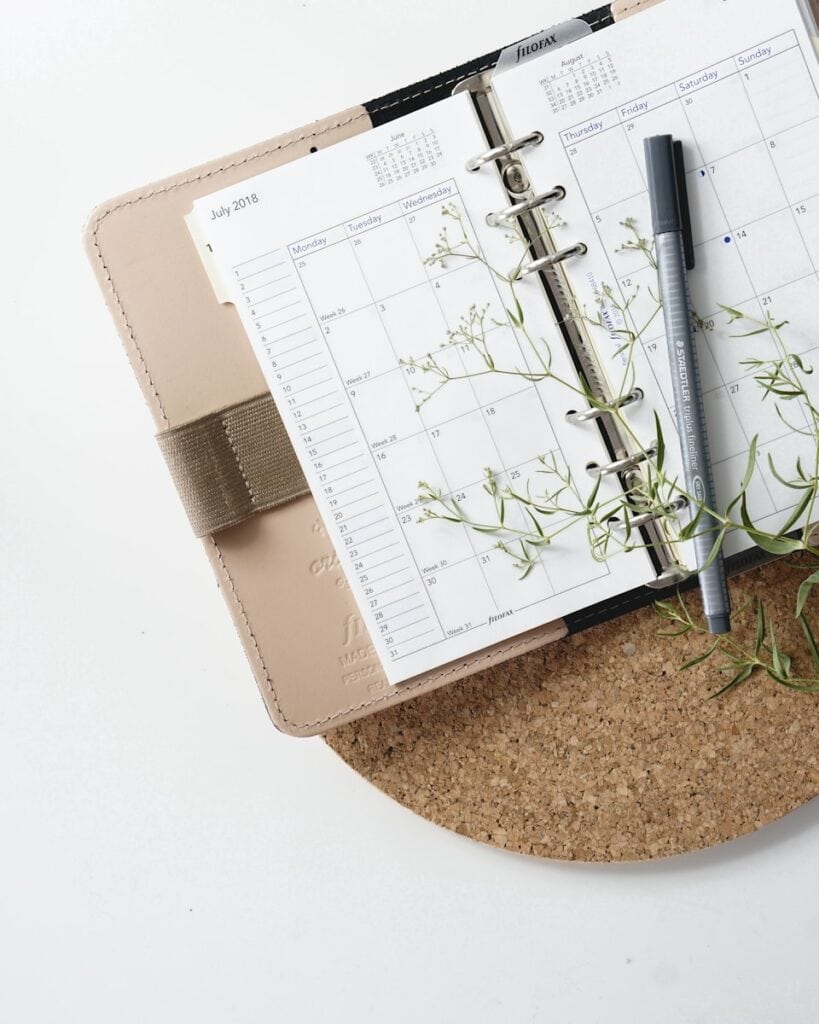Feeling unsure about how to start low carb diet? You’re not alone. Between carb cravings, confusing meal plans, and nutrition myths, getting started can feel overwhelming.
But the truth is, starting a low carb diet doesn’t have to be hard. You don’t need complicated rules or expensive products, just real food, smart habits, and a clear plan.
With the right steps, you’ll enjoy steady energy, fewer cravings, and better health without feeling restricted.
Here’s your easy, step-by-step guide on how to start low carb diet the right way.
Step 1: Understand What a Low Carb Diet Is and Why It Works

Before we get into more depth about low carb diets, it’s important to understand what it really means.
Essentially, a low carb diet cuts down on sugary foods, grains, and starchy vegetables, while focusing on whole, healthy foods like meats, eggs, non-starchy vegetables, and healthy fats.
The main reason low carb diets work is that they help shift your body’s energy source from carbs to fats.
When you eat fewer carbs, your body starts burning fat for fuel, which can lead to weight loss, more stable energy levels, and reduced hunger.
This switch helps keep your blood sugar balanced and can even improve mental focus throughout the day.
Now that you have a clear idea of how low carb works, it’s important to take a moment and think about why you want to start this diet.
Having a clear goal will keep you motivated and help you stay on track.
Step 2: Set Your Goals Before Starting a Low Carb Diet
To start a low carb diet successfully, begin by setting clear and realistic goals. Ask yourself what you hope to achieve, perhaps it’s weight loss.
Better control over your blood sugar, or simply having more steady energy throughout the day.
Defining your “why” gives you a clear purpose and helps you stay motivated when challenges arise.
For instance, a goal might be losing 12 pounds over three months, keeping your energy levels stable without afternoon crashes, or lowering your fasting blood sugar to under 100 mg/dL.
Writing down these goals and tracking your progress regularly can help you stay focused and see how far you’ve come.
Once you know what you’re aiming for, everything else becomes easier to plan. So let’s figure out what your daily meals might actually look like and how to make them work for your lifestyle.
Step 3: How to Plan Meals for a Low Carb Lifestyle

Planning meals is one of the most powerful ways to stay on track. Decide what you’ll eat for each meal so you’re not stuck guessing when hunger hits.
Here’s a sample day to get you started:
Breakfast: Scrambled eggs with spinach and avocado
Lunch: Grilled chicken salad with olive oil dressing
Dinner: Baked salmon with steamed asparagus
Snack: Almonds or a boiled egg
Batch cooking and prepping ahead saves time and keeps your low carb goals within reach.
Planning your meals gives you direction, but labels can still trip you up if you’re not sure what to look for.
Step 4: Learn to Read Nutrition Labels
Labels can be tricky, especially on foods that seem “healthy.” Look beyond marketing and check:
Total carbs
Fiber
Sugar and sugar alcohols
To calculate net carbs, subtract fiber and sugar alcohols from total carbs. For example:
10g total carbs – 4g fiber = 6g net carbs
Choose foods with fewer than 5g net carbs per serving to stay within your daily target.
Labels make more sense now but smart shopping is only half the battle. To make this stick, you’ll want to set up your kitchen in a way that makes low carb choices the easiest ones.
Step 5: Stock Up on Low Carb Essentials
Your environment plays a big role in your success, so it’s important to prepare your kitchen with the right foods before you begin.
Start by removing high-carb items that may tempt you when you’re hungry or in a rush. Then, fill your pantry and fridge with low carb essentials.
Choose proteins like chicken, tuna, or grass-fed beef that provide the foundation for satisfying meals. Include healthy fats such as olive oil, butter, cheese, and avocados to keep you full.
Stock up on fresh or frozen vegetables like spinach, zucchini, cauliflower, and bell peppers for vitamins and fiber.
For quick snacks, keep items like sugar-free jerky, mixed nuts, and pork rinds on hand. Having these staples ready makes it easier to stay consistent with your low carb goals.
With your kitchen stocked and ready, your body’s about to go through some changes.
Staying hydrated and keeping your minerals in check can make the early days a lot smoother.
Step 6: Stay Hydrated and Replenish Electrolytes

During the first few days, your body adjusts by shedding extra water weight. This can lead to dehydration or what’s known as the “keto flu.”
To stay ahead of it:
* Drink plenty of water
* Add a pinch of salt to your meals
* Eat potassium-rich foods like avocados and leafy greens
* Consider magnesium supplements if needed
This keeps your energy steady and reduces fatigue or headaches.
Even with good hydration, the first few days can feel a bit rocky.
If you’re not quite feeling like yourself, don’t worry, there’s a reason for that, and there’s a way through it.
Step 7: Manage Early Side Effects
It’s common to feel tired or irritable at first as your body switches to fat burning. These side effects are temporary and easy to manage with small changes:
* Drink more water
* Increase healthy fats like olive oil or coconut oil
* Rest when needed
Most people start to feel better after the first week.Once your body starts to adjust, you’ll begin noticing small changes, some on the scale, others in how you feel.
Tracking those wins can keep you going when motivation dips.
Step 8: Track Your Progress
Tracking helps you stay focused and adjust your plan if needed. Use an app or journal to log:
* Daily meals
* Macros (carbs, fat, protein)
* Body measurements or weight
Look for non-scale victories too:
* Better sleep
* More mental clarity
* Clothes fitting more comfortably
These are all signs your new routine is working. You’re starting to build real momentum now. But life happens and your diet needs to work with it, not against it.
A little flexibility can go a long way.
Step 9: Stay Flexible with Your Low Carb Plan
Life doesn’t follow a script, and your diet doesn’t have to either. If you eat something off-plan, don’t stress. Just refocus and move forward.
Examples of staying flexible:
At restaurants: Choose grilled protein with veggies or salad
Social events: Bring a low carb dish or eat beforehand
Being consistent over time is what delivers results not being perfect every day. Even with flexibility, doing this on your own can feel isolating.
That’s why finding support, inspiration, or just someone to swap recipes with can make a big difference.
Step 10: Find Support and Reliable Resources
Having a support system can make all the difference. Look for online communities, apps, or even a friend who shares your goals. You can also explore:
* Recipe blogs
* Low carb cookbooks
* Podcasts on nutrition
* Macro-tracking tools
And if you want extra guidance, talk to a dietitian who understands how to start low carb diet strategies that work for your needs.
You’ve got the tools and the support now let’s make sure your actual meals are setting you up for success.
Here’s what to eat to keep your body fueled and your progress steady.
Foods to Eat When Starting a Low Carb Diet
When starting a low carb diet, focus on filling your plate with whole, nutrient-dense foods that support your goals.
Lean meats like chicken, turkey, and beef provide essential protein to keep you full and help maintain muscle.
Fatty fish such as salmon, mackerel, and sardines offer heart-healthy omega-3s and work well in a variety of meals.
Non-starchy vegetables like spinach, zucchini, asparagus, and bell peppers are low in carbs but high in fiber and vitamins.
Don’t forget about healthy fats: avocados, nuts, olive oil, and coconut oil help you feel satisfied while supporting brain and hormone function.
You can also include eggs and moderate amounts of full-fat dairy for added variety and flavor. Of course, knowing what to eat is just one piece of the puzzle.
It’s just as important to know which foods can quietly knock you off course, especially when you’re starting out.
Foods to Avoid When Starting Low Carb
To stay within your carb goals, avoid foods that can disrupt your progress.
Sugary snacks and drinks cause rapid spikes in blood sugar, which often leads to energy crashes and renewed cravings.
Staples like bread, pasta, rice, and breakfast cereals are high in carbohydrates and quickly convert to glucose in the body.
Even some fruits such as bananas, grapes, and mangoes contain more sugar than your plan allows.
Starchy vegetables like potatoes, corn, and peas are best limited during the early stages of your diet.
Be cautious with flavored dairy products, which often include added sugars, and skip packaged low-carb foods that rely on artificial ingredients.
With focusing on natural, whole foods, you’ll have better results and fewer setbacks. Cutting out those common carb traps can help you hit your stride faster.
But don’t be surprised if the first week still feels a little off your body’s adjusting, and that’s totally normal.
What to Expect in the First Week of a Low Carb Diet
The first week of a low carb diet can feel like a mix of wins and challenges but knowing what to expect makes it easier to stay on track.
In the first couple of days, you might notice you’re dropping a few pounds quickly.
That’s mostly water weight as your body starts to use up stored carbs, but it can feel encouraging.
At the same time, you may feel a little tired, cranky, or even foggy-headed. This is common and often called the “low carb flu.”
It happens because your body is adjusting to using fat for fuel instead of sugar. Stay hydrated, eat enough healthy fats, and don’t be afraid to add a little extra salt to your meals.
And by the middle of the week, cravings often start to fade, and your energy may pick up. You’ll likely notice you’re not as hungry between meals.
By day seven, many people feel lighter, more focused, and more in control of their eating habits.
Remember, this first week is about progress, not perfection. Give your body time to adjust, and focus on how you feel each day.
The changes are just getting started and they’re worth it. Once that first week is behind you, everything starts to settle into place.
Still have questions?
FAQ: How to Start Low Carb Diet
Q: What’s the best way to start a low carb diet?
Start simple: plan your meals, stock your kitchen with essentials, and focus on whole foods. Aim for consistency, not perfection.
Q: How many carbs should I eat when starting low carb?
Most people start with 20–50 grams of net carbs per day. Adjust based on your goals, activity level, and how your body responds.
Q: Can I do low carb without going full keto?
Yes. Low carb doesn’t have to be ketogenic. You can still enjoy the benefits by simply reducing carbs and focusing on whole foods.
Q: What should I expect in the first week of a low carb diet?
You might feel tired, irritable, or get a headache as your body adapts. These symptoms usually go away after a few days.
Q: Is it normal to feel tired when starting low carb?
Yes. Your body is adjusting to using fat for fuel. Stay hydrated, eat enough fat, and rest when needed.
Q: How do I deal with carb cravings when starting out?
Eat more healthy fats and protein to stay full. Keep low-carb snacks nearby and avoid keeping high-carb foods at home.
The Bottom Line
Starting a low carb diet is a journey that’s all about finding balance and creating habits that work for you.
As you begin, remember that it’s not about being perfect, but about making small, consistent changes that add up over time.
You’ll likely face challenges at first, but the benefits of more energy, reduced cravings, and better overall health are definitely worth it.
By understanding what foods to eat, how to plan your meals, and how to handle early side effects, you’re setting yourself up for long-term success.
Keep track of your progress, stay flexible, and don’t be afraid to ask for support when needed.
In the end, the most important thing is to be kind to yourself. Celebrate your wins, big or small, and keep moving forward with confidence.
Your low carb journey is just beginning, and every step you take brings you closer to your goals.